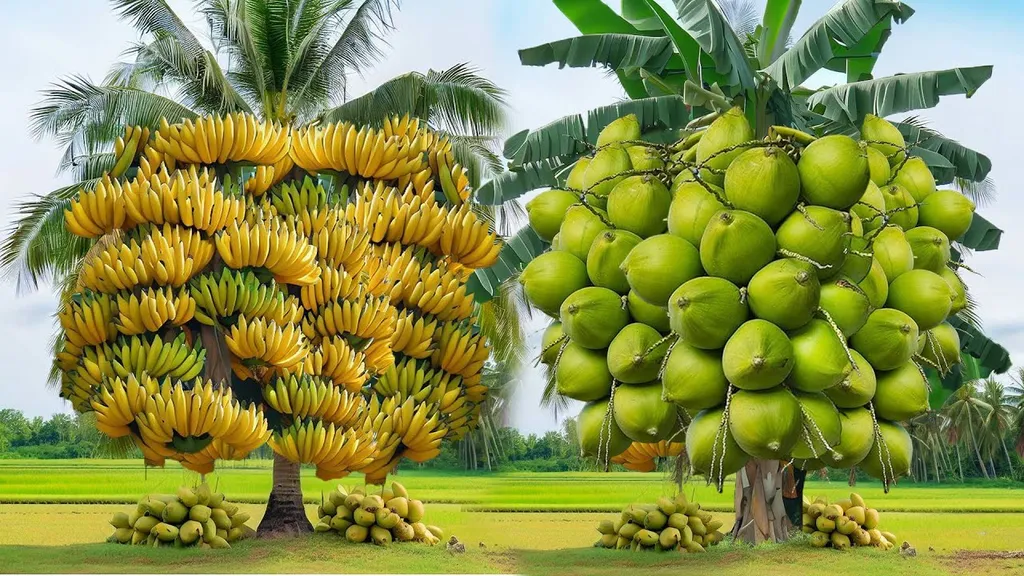In the quest for sustainable agricultural practices, researchers have turned to an unlikely trio of materials to create an innovative, eco-friendly solution: coconut fiber, banana pseudostem, and water hyacinth. A recent study published in *Advances in Food Science, Sustainable Agriculture, and Agroindustrial Engineering* has developed a sheet-type organic mulch from these natural resources, offering a promising alternative to synthetic options.
The research, led by Nur Anisah Rizky Harahap from Universitas Brawijaya, explores the potential of combining these materials to produce a mulch that is not only cost-effective but also beneficial for soil health and crop productivity. The study’s findings could have significant implications for the agriculture sector, particularly in tropical regions where these materials are abundant.
The process involves drying, alkaline pretreatment, pulping, molding, and oven-drying the materials to create a robust, organic mulch. The resulting product was characterized for its physical, mechanical, and chemical properties. The raw materials exhibited distinct compositions: coconut fiber was rich in lignin and cellulose, banana pseudostem had the highest hemicellulose content, and water hyacinth contained the greatest protein content.
Among the various combinations tested, the treatment with 70% coconut fiber and 30% banana pseudostem (M3P3) showed the highest water absorption capacity, a crucial property for maintaining soil moisture. On the other hand, the treatment with 100% banana pseudostem (P1) achieved the highest tensile strength, indicating its durability in field conditions.
“Our findings suggest that these composite mulches can effectively retain water and release nutrients, which are essential for plant growth,” Harahap explained. “Moreover, the use of natural materials makes them an eco-friendly alternative to synthetic mulches, reducing the environmental impact of agricultural practices.”
The study also confirmed the presence of hydroxyl and carbonyl functional groups and a porous surface morphology, further supporting the mulch’s ability to retain water and release nutrients. These properties make the composite mulch a promising tool for sustainable agriculture, particularly in regions where water scarcity and soil degradation are significant challenges.
The commercial impact of this research could be substantial. Farmers could benefit from a cost-effective, locally sourced mulch that improves soil health and crop yields. Additionally, the use of water hyacinth, often considered a nuisance plant, could provide a new revenue stream for communities struggling with its proliferation.
As the agriculture sector continues to seek sustainable solutions, this research offers a glimpse into the potential of natural, composite materials. The findings could pave the way for further innovations in agroindustrial engineering, shaping the future of sustainable agriculture.

